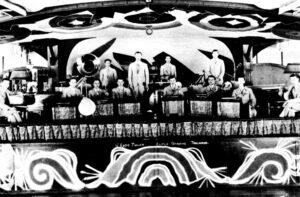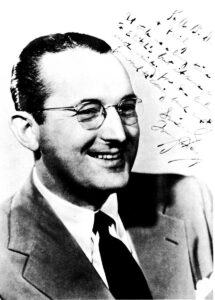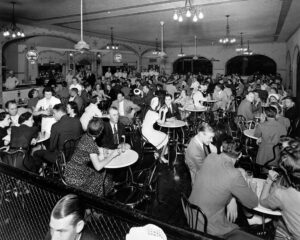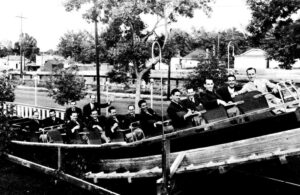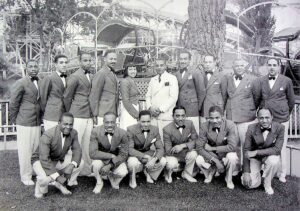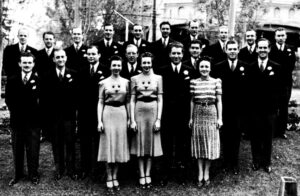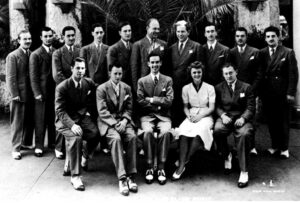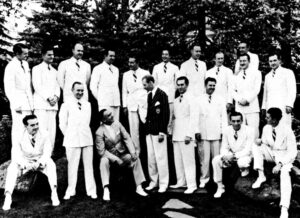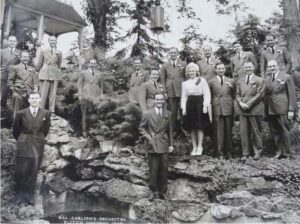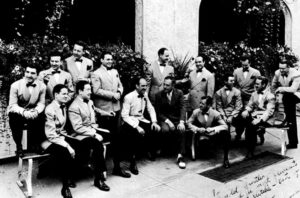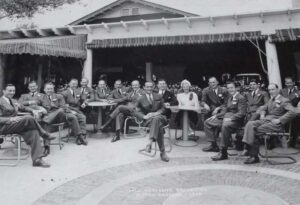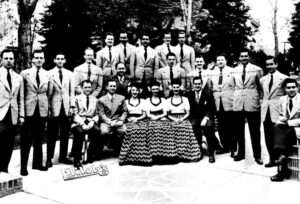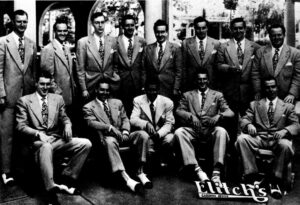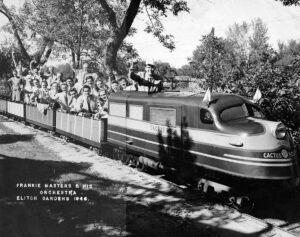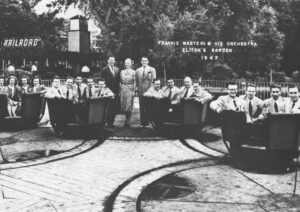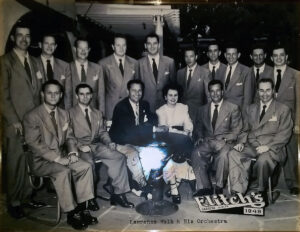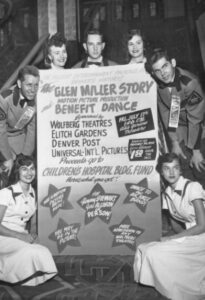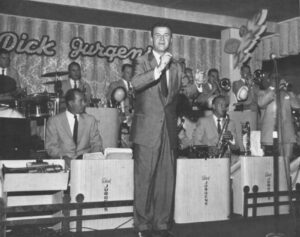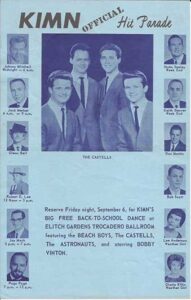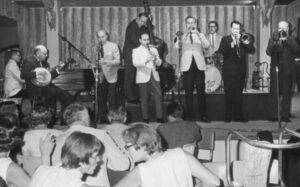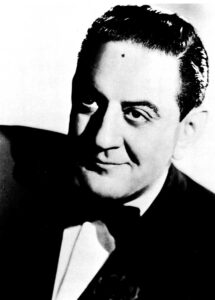The Trocadero Ballroom
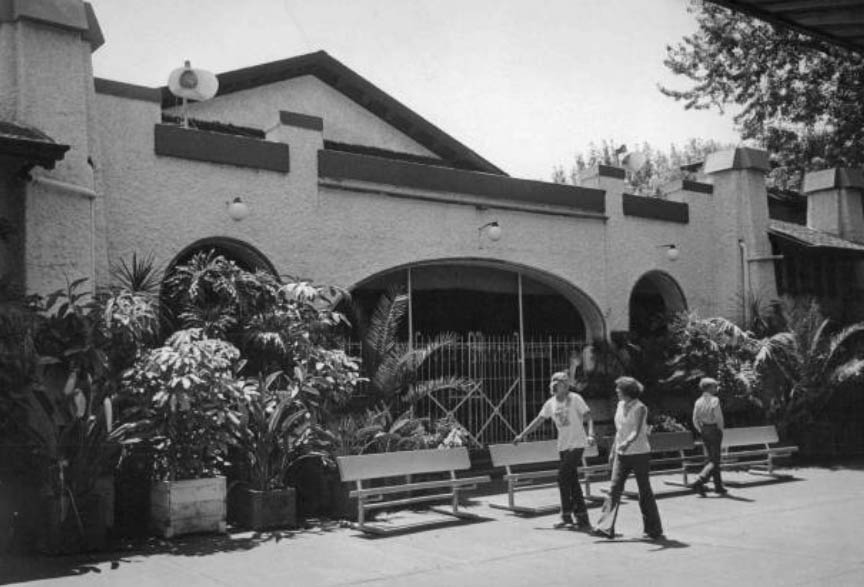 The Elitch Gardens Trocadero Ballroom was a legendary venue! It was part of the larger Elitch Gardens amusement park complex, which originally opened in 1890 as the Elitch’s Zoological Gardens.
The Elitch Gardens Trocadero Ballroom was a legendary venue! It was part of the larger Elitch Gardens amusement park complex, which originally opened in 1890 as the Elitch’s Zoological Gardens.
The Trocadero Ballroom, named after the famous Trocadero in Paris, was built in 1917 as an addition to the Elitch Gardens amusement park. (See the photo above from when it opened in 1917.)
The ballroom quickly became known for its elegant architecture, live music, and dancing. During the early to mid-20th century, it hosted performances by renowned musicians and bands, including Benny Goodman, Glenn Miller, and Tommy Dorsey.
The Trocadero Ballroom was not only a place for entertainment but also served as a social hub for the Denver community.
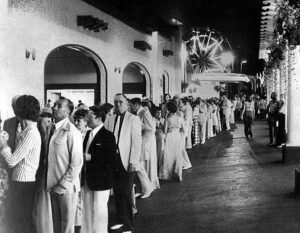 However, like many historic venues, the Trocadero Ballroom eventually faced challenges. In the latter half of the 20th century, as tastes in entertainment changed and the amusement park industry evolved, attendance at Elitch Gardens declined. The ballroom struggled to maintain its former glory and eventually closed its doors in 1975.
However, like many historic venues, the Trocadero Ballroom eventually faced challenges. In the latter half of the 20th century, as tastes in entertainment changed and the amusement park industry evolved, attendance at Elitch Gardens declined. The ballroom struggled to maintain its former glory and eventually closed its doors in 1975.
Despite its closure, the Trocadero Ballroom remains a cherished part of Denver’s cultural history. The Elitch Gardens amusement park underwent several redevelopments over the years, and while the ballroom itself was not restored, its legacy lives on in the memories of those who experienced its heyday.
Today, the Historic Elitch Theatre works to preserve the history of the park, and we include the history of the Troc in our preservation efforts.
Elitch’s Trocadero Ballroom was a place where memories were made
For generations of DU students, Elitch Gardens was one of Denver’s most popular destinations for a date or a night out with the crowd. The Trocadero Ballroom, Elitch’s spacious outdoor dancing pavilion, was a special destination. The touring dance bands of the 1930s, ’40s and ’50s — Harry James, Les Brown, Guy Lombardo, Stan Kenton, Gene Krupa, Benny Goodman, the Dorsey brothers, Tex Beneke and Lawrence Welk — all loved to play “the Troc,” a favorite stopping off point between Kansas City and California.
“The big ‘high rent’ date was to muster up enough money to take your date to Elitch’s straightaway for dancing in the Troc, or to go to a theater offering and then dance during the intermissions and after the show,” recalls Glenn Endsley, BA ’60.
“It was a special place,” adds Jack Nelson, BA ’54.
John and Mary Elitch opened the gardens in 1890 on the site of a small farm. The park offered something for everyone, mixing highbrow culture and entertainment for the masses. A zoo, botanic gardens, symphony orchestra, stock theater (begun in 1897 and at one time the longest continuously running stock theatre in the United States), roller coaster, carousel and miniature train all were to be found at Elitch’s.
The Trocadero Ballroom opened in 1917 and featured a 150-foot-long dance floor. In the 1930s, ballroom dancing became the rage — a cheap form of entertainment during the Depression years. Parents never had to worry about their teenagers going to the Troc. It was a safe place with constant supervision. Dancing too close? Not allowed. A little tipsy? Out you went.
“It was just a fun place for a wonderful date,” recalls James VanderWal, BSBA ’63. “The dance floor was wood with just the right amount of dance wax to allow the dancers to slide their feet. The crowd was monitored by floorwalkers who had the authority to admonish you for bad behavior. The dress was suits with tie for men and dresses for the ladies. Around the dance floor were four rows of stadium seating. Around the outside of the seats was open and on most summer evenings a breeze would keep everyone comfortable. For the most part you danced the night away and only stopped dancing when your date’s feet hurt or the band stopped for a break.”
For 30 years, Denver radio station KOA broadcast “An Evening At The Troc,” featuring big-band concerts every Saturday night. The station’s strong signal reached 30 states.
Rock-and-roll eventually replaced big band, and in 1975 the Trocadero Ballroom was demolished, despite protests from preservation groups and many longtime Denverites. In 1994, Elitch Gardens closed its gates forever at its original 36-acre site at West 38th Avenue and Tennyson Street because it couldn’t accommodate needed expansion.
A new Elitch Gardens opened in 1995, nestled between the football stadium and hockey arena near downtown Denver. Fifteen of the 18 original rides made the move to the new site, where they were joined by a number of new rides and attractions in a multi-million-dollar upgrade. In 1998, Elitch Gardens became Six Flags Elitch Gardens.
The old Elitch’s site now is home to the Highlands Garden Village, a $50-million project featuring senior apartments, single-family homes, small shops, a daycare center and a pre-school. Now a National Historic Landmark, the Elitch Theatre still remains and is slated for restoration.
In Elitch Gardens — Spinning a Century of Dreams (Johnson Books, 2003), author and park historian Betty Hull wrote: “And if Mary’s (Mary Elitch) ghost is still out there at the old park site … I picture her smiling.”
Steve Fisher [ https://magazine-archive.du.edu/current-issue/elitchs-trocadero-ballroom-was-a-place-where-memories-were-made/]
Trocadero Ballroom Gallery
“Gurtler also began the tradition of “An Evening at the Troc,” a radio program that was broadcast over KOA radio (in which Gurtler held a financial interest) every Saturday night for more than thirty years. The station’s signal was so strong that the ballroom’s music could be heard and enjoyed across most of the West and Southwest, which caused Elitch Gardens’, and especially the Trocadero’s, fame to spread. The adjacent Trocadero Court charged a dollar for table reservations for an entire evening, and the Grille Room, which joined the ballroom through numerous open arches, was a very popular gathering place to get a cold drink or just chat.”
[Hull, B. L. (2003). Denver’s Elitch Gardens: Spinning a century of dreams. Johnson Books.]

